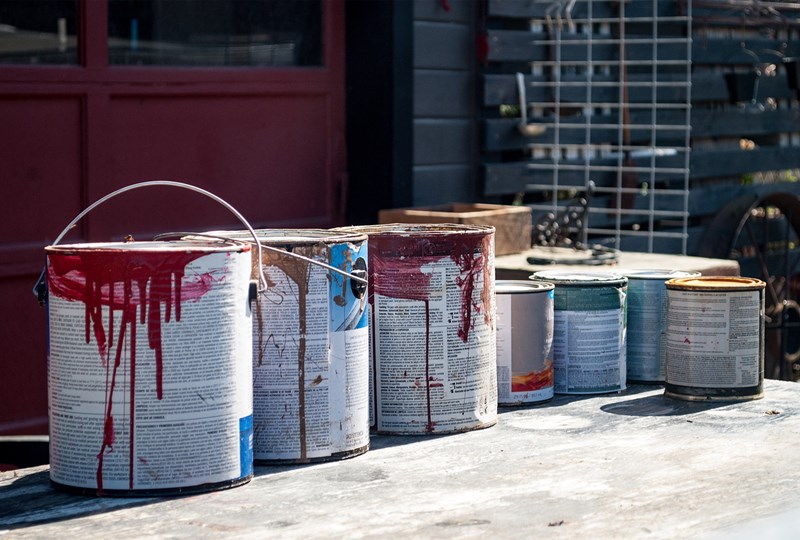
Key insights
- When selling, it’s important not to burden the new owners by leaving behind items they didn’t ask for.
- Some items, like manuals, warranties and spare parts, can be left behind as a convenience to the new owners.
- When in doubt about what to leave behind, consult your REALTOR® for their expert opinion.
Your home’s headed off the market and you’re headed to the closing table. As you pack up your belongings, you may wonder how tidy you should leave the property — and what you can leave behind as you pack up for good.
Here are tips to ensure a no-drama handoff to your home’s new owners.
Don’t leave anything behind without asking
After years in one place, some items can feel like they belong in a certain room or space — but they really just belong to you. Consider the fabric laundry room cubbies that fit just so on the shelves, the stand-up toilet paper dispenser in the basement bathroom, the twinkly lights you hung in the backyard a few summers ago.
If you haven’t specifically received notice that the buyers want to keep those items, you should take special care to remove them. In Minnesota and Wisconsin real estate contracts, you are required to remove all debris and personal property. When you aren’t sure if an item counts as a fixture to the property or should be removed, ask your Realtor for their opinion.
To ensure you don’t miss anything:
- Look through cabinets, drawers and closets in every room.
- Remember to check the attic, basement and overhead garage storage.
- Have 2-3 people check each room before it’s given the final signoff.
Leave behind device- and repair-specific extras
Unless you have explicit instructions from the buyer, you can usually leave behind device- or repair-specific items, including:
- Manuals and warranties for appliances and systems
- Extra filters for your furnace or central air system
- Leftover bathroom, kitchen or roofing tiles
- Light bulbs that fit certain light fixtures
- Extra cabinet hardware
The idea behind leaving these items is that they will be a help, not a burden, to the new buyer. While a few spare paver stones are a nice offering to a buyer who may someday need to repair a cracking patio, a pile of 200 paver stones you didn’t want to dispose of is not. Use your best judgment when you are leaving any items behind.
What to do with extra paint cans
It’s hard to know if a homebuyer is planning to keep the paint color that you used for the home’s exterior or interior. But because paint samples must be properly disposed of, you don’t want to burden the new owner with paint samples they don’t plan to use.
If you have extra paint cans, ask in advance (via their agent) if they’d like for them to remain in the house. If you don’t have extra paint, but you do have a reference of the brands and colors used throughout your home, it’s always kind to leave behind that guide so the new owner can touch up certain rooms or areas.
The final cleanup and lawn etiquette
Most purchase agreements — and all of them in the state of Wisconsin — require that the home is left in “broom-clean condition.” This phrase can have varying interpretations but in general, it’s considerate to pass on a home that doesn’t need to be cleaned from top to bottom upon move-in.
Minimally, you’ll want to:
- Sweep and vacuum all floors, including inside closets and smaller storage spaces.
- Wipe down all cabinets and counters, inside and out.
- Clean kitchen appliances, including the tops and inside of the refrigerator, freezer, oven and microwave.
- Clean the bathrooms, including the shower, bathtub, toilet, sink and vanity.
- Remove any signs of pets — including fur, stains and odors.
- Sweep the garage floor to remove all debris.
In the winter, consider plowing the driveway and sidewalks one final time before closing. In warmer months, mow your lawn in the days before closing so the new owner doesn’t have to trudge through tall grass during move-in.
Ready to move on?
If you’re hoping to sell your home, we can get you on your way. Contact Edina Realty or your Realtor for assistance on selling, moving and finding what’s next.









 ©2025 Prosperity Home Mortgage LLC®. (877) 275-1762. 3060 Williams Drive, Suite 600, Fairfax, VA 22031. All first mortgage products are provided by Prosperity Home Mortgage, LLC®. Not all mortgage products may be available in all areas. Not all borrowers will qualify. NMLS ID #75164 (For licensing information go to: NMLS Consumer Access at
©2025 Prosperity Home Mortgage LLC®. (877) 275-1762. 3060 Williams Drive, Suite 600, Fairfax, VA 22031. All first mortgage products are provided by Prosperity Home Mortgage, LLC®. Not all mortgage products may be available in all areas. Not all borrowers will qualify. NMLS ID #75164 (For licensing information go to: NMLS Consumer Access at